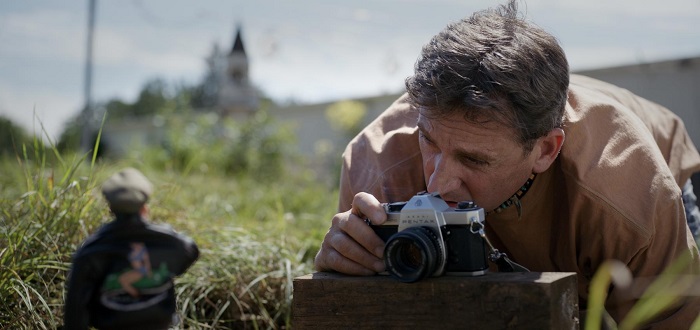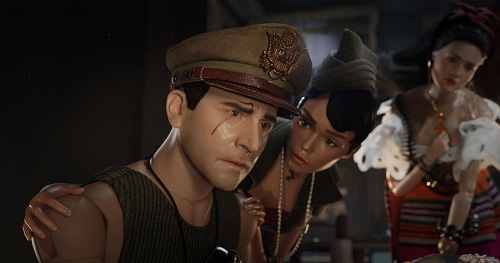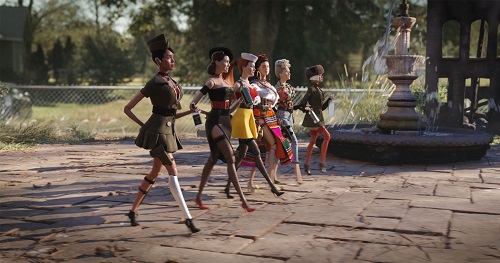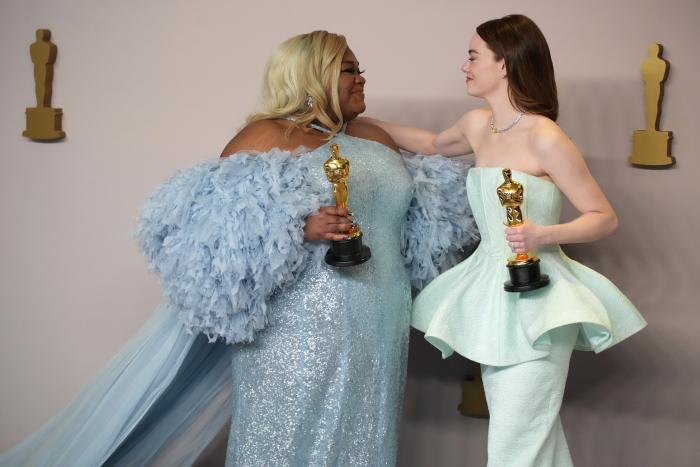

Review: ‘Welcome to Marwen’ Cares More About Using Fancy CGI to Tell a Story Than, You Know, Actually Telling a Story
By Roxana Hadadi | Film | December 24, 2018 |
By Roxana Hadadi | Film | December 24, 2018 |

Here are my thoughts on Welcome to Marwen: Not every documentary needs to be remade into a fictional narrative. Dammit, Robert Zemeckis, do you hear me?! Keep your hands off Free Solo!
Zemeckis’s career remains kind of absurd to think about: He will forever be remembered for his successes with Tom Hanks (Forrest Gump and Cast Away), but the man has always tinkered with the visually inventive side of things, too (he directed all three Back to the Future films, Who Framed Roger Rabbit, and Contact, and as motion-capture and CGI became more prevalent, The Polar Express, Beowulf, and A Christmas Carol).
And Welcome to Marwen feels like a combination of both sets of Zemeckis’s filmmaking instincts: the sentimentality and kindness-as-a-political-act mentality of Forrest Gump and the too-much-CGI nature of his 2015 film The Walk. The Walk was a recreation of the documentary Man on Wire that deadened the impact of French high-wire artist Philippe Petit’s actual feat because of the film’s reliance on visual effects; Welcome to Marwen, an adaptation of the documentary Marwencol, unfortunately does the same thing, creating too much distance between us as viewers and the trauma and recovery of Mark Hogancamp’s life.

The film begins in the world Hogancamp has created for himself: World War II pilot Capt. Hogie (Steve Carell) is shot down over Belgium and finds himself facing off against a group of five Nazis who want to kill him. When they attack, cutting his face and nearly beating him to death, he’s saved by five different women who come to his aid and who take him back to the town of Marwen, where they all live and protect Hogie from attacks by Nazi soldiers who just won’t die.
We pull out of that fiction to realize Marwen is an art installation created by Hogancamp using miniature sets he built and dolls he meticulously costumed and styled; maneuvering the dolls, creating scenarios in which they interact with each other, and taking photographs of it all is how Hogancamp is trying to heal after a vicious attack. (What Hogancamp imagines the Hogie and Women of Marwen dolls doing are the animated sequences we see; each character, we come to realize, syncs up with someone in Hogancamp’s own life.) Three years before, Hogancamp was jumped outside of a bar and left to die; with the sentencing of his attackers coming up, he’s beginning to unravel.
But there are people—primarily women—who care for Hogancamp, and who want to help him get better: Roberta (Merritt Wever), who works at the local hobby shop where Mark buys items for Marwen and whose cousin organized an upcoming art show for him in New York City; Julie (Janelle Monáe), the Army veteran who led his physical therapy sessions; Caralala (Eiza González), his friend and coworker at the town bar; and Anna (Gwendoline Christie), his caretaker who brings him groceries and his prescription drugs. These are the women who ask him how he’s feeling, inquire about the latest happenings in Marwen, and who have stuck by his side over the years. And into their midst arrives Nicol (Leslie Mann), the new neighbor who moves in across the street from Mark.
Nicol is a fascination to Mark: He buys a doll with red hair once she arrives, names it after her, and immediately starts incorporating her into the Marwen narrative. When we jump to those animated sequences, her character is throwing Molotov cocktails at Nazis, dancing with Hogie in anachronistic stilettos, and befriending the other Women of Marwen. But in the real world, things aren’t that simple: Nicol has an abusive ex-boyfriend who won’t leave her alone, news coverage of the upcoming sentencing scares Mark, and Roberta can’t convince him to attend the art show honoring his own work. Healing isn’t an easy process.

What Welcome to Marwen prioritizes is those animated sequences, using them as a way to show us how Mark is feeling, and Zemeckis makes the point more than once that Marwen blurred the lines for Hogancamp between fiction and reality. But the film is repetitive in its handling of that point: In various scenes, we see Hogie say certain lines of dialogue to the Women of Marwen, they say certain things back to him, and then we switch to the real world, where scenes play out the same way. We come to expect that what Mark imagines is what really ends up happening, so when that dynamic changes for effect later in the film, it’s a switch that doesn’t quite land the emotional impact Zemeckis so desires.
And that’s really the issue throughout the film—the lack of emotional impact. Carell and Mann are both solid, but the movie jumps around in various timelines and between our world and the world of Marwen, not really building a rhythm in either. The sort of morbid humor of Marwen (like when Hogie jams a stiletto into the neck of a Nazi, who keeps gabbing away) is an extension of Hogancamp, I suppose, but the movie doesn’t effectively communicate that those elements of Hogie’s personality are present in his creator, too. There’s an overall lack of interiority here—most of the women are developed only in terms of how they care for Hogancamp, and Hogancamp himself doesn’t get much more than a surface-level presentation.
There is one major element of Welcome to Marwen that I won’t spell out here because I think the movie sort of treats it like a twist, but suffice to say that I think the film uses gendered ideas about masculinity and femininity as a shortcut for character development, and there’s this bit with a Belgian witch character in Marwen that is particularly grating. “You gotta embrace the pain,” Monae’s Julie says, and that idea comes up over and over again in the animated sequences, where Hogie and the women are consistently fighting what seems like an insurmountable force. But their victory doesn’t mean much when we know so little about who these people are, and that shortcoming reflects how Zemeckis in Welcome to Marwen, as he has so often in this stage of career, focuses more on the visuals of a story instead of the why of it.
← Review: 'Second Act' Relies on Jennifer Lopez's Cleavage and Milo Ventimiglia's Butt | Best Movies of 2018: 'Widows,' 'Support the Girls,' and 'Mandy' →
More Like This
'The Gentlemen' Review: Ritchie's Latest Episodic Caper is a Blast for Fans of his Formula
Kristen Stewart's 'Love Lies Bleeding' Is Gonna Kick Your Ass And Make You Beg For More
What the Hell Is Going On in Apple TV+'s 'Constellation'?
‘Shōgun’ is TV’s Next Big Epic
It's Not the Filmmakers' Fault that Bill Belichick Sucks in 'The Dynasty: New England Patriots'

What’s Old Is New Again: Old Hollywood Glamour Glitters at the 2024 Oscars
Al Pacino Presents Best Picture Oscar, Confuses Everyone
The Dangerous Lie Of 'TradWives'
A Legendary Horror Franchise Is Headed To Television
'The Mandalorian' Season 4 Is Probably Not Happening
Halle Bailey On Why She Chose To Keep Her Pregnancy Private
More Like This
'The Gentlemen' Review: Ritchie's Latest Episodic Caper is a Blast for Fans of his Formula
Kristen Stewart's 'Love Lies Bleeding' Is Gonna Kick Your Ass And Make You Beg For More
What the Hell Is Going On in Apple TV+'s 'Constellation'?
‘Shōgun’ is TV’s Next Big Epic
It's Not the Filmmakers' Fault that Bill Belichick Sucks in 'The Dynasty: New England Patriots'
Reviews